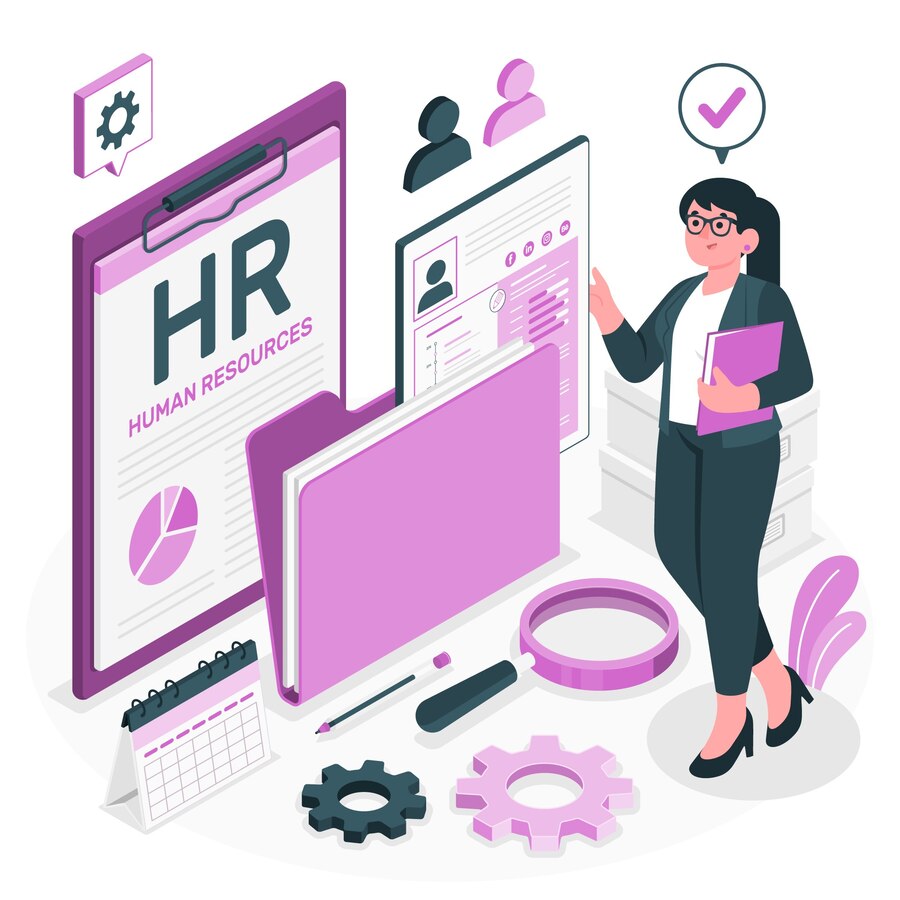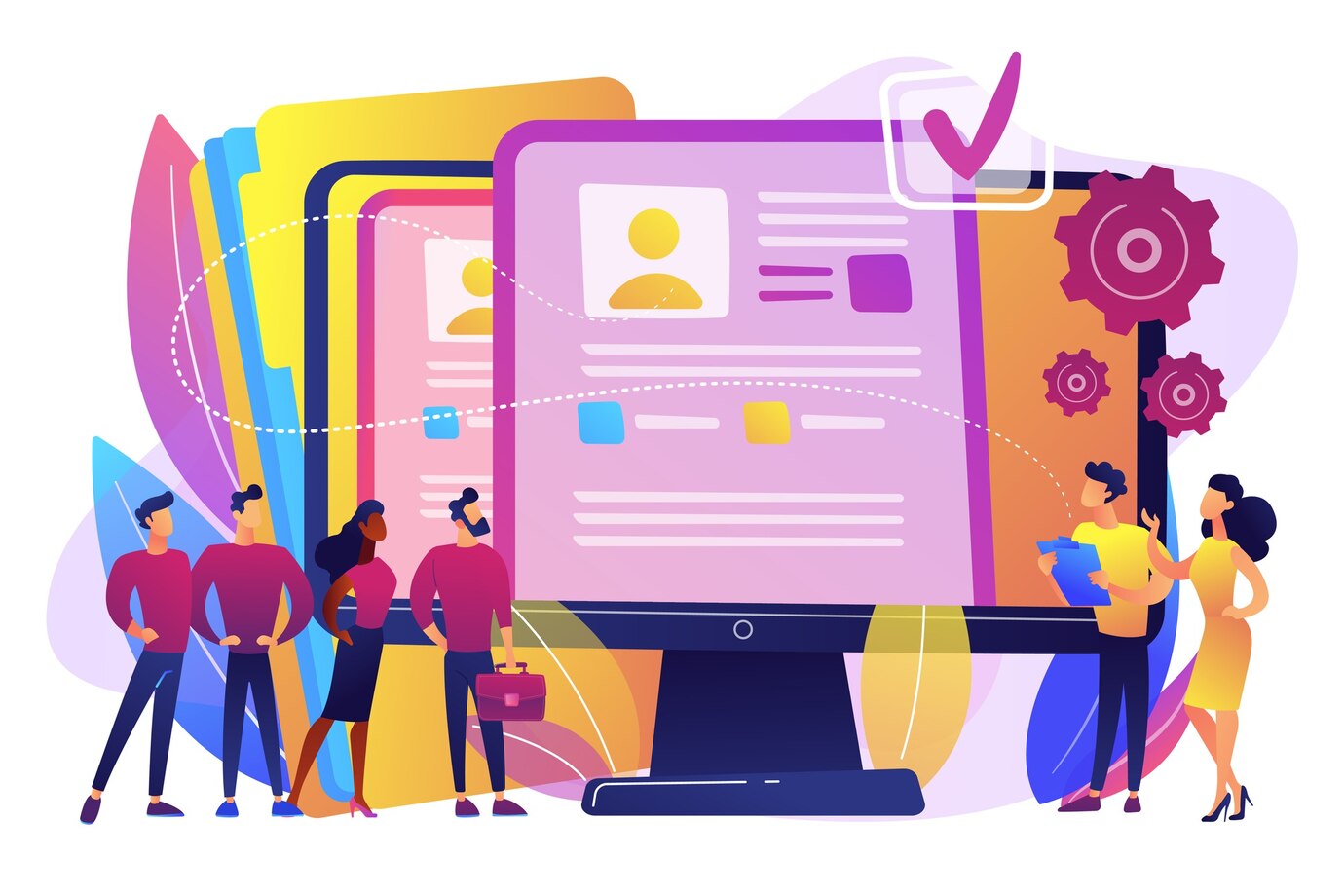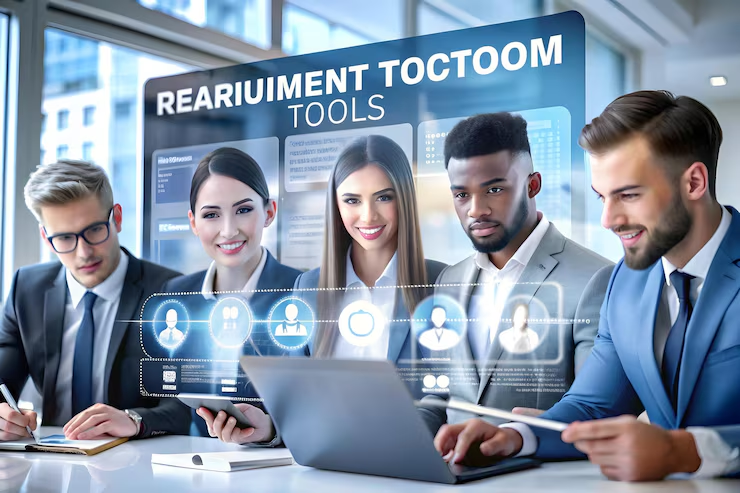HRMS vs ATS: Understanding the Differences
The hiring procedure experiences enhanced efficiency through modern software applications which include HRMS (Human Resource Management System) and ATS (Applicant Tracking System) that replaced conventional manual recruitment methods. This modern technology automates all tasks from resume screening through candidate selection to interview scheduling and maintains candidate contact which together reduce both recruitment duration and human mistakes. Therefore it is important to discuss HRMS vs ATS, one of the most elongated debates of which is better.
Through ATS keyword-based resume screening organizations retain only suitable candidates yet an HRMS software system handles every stage of recruitment starting with job advertisement through onboarding new employees. Organizations at any scale benefit from these software solutions because they produce recruitment outcomes that happen at enhanced speed and show unbiased practices while keeping costs lower than traditional manual procedures.

What is HRMS (Human Resource Management System)?
HRMS, also known as HRIS (HR Information System) is a very extensive digital solution, that solves all your recruitment problems. It is specially designed to automate various HR functions. The system unifies a range of human resources procedures that serve recruitment in addition to payroll management, tracks attendance, evaluates performance, establishes staff connections, and fulfills regulatory requirements.
An HRMS system significantly boosts business performance by automating document processes. Additionally, it provides complete data organization, and consequently, it generates instant analytical reports that support better decisions. HRMS solutions today use AI-based software and cloud capabilities to help companies perform human resources management tasks from any location. The automation of regular work activities through HRMS allows organizations to reduce errors and save time while delivering better employee interactions thus making it vital for all business structures.
Types of HRMS
-
Operational HRMS
Manages Important HR functions like payroll, attendance, and employee records.
-
Tactical HRMS
The system enables the organization to manage recruitment and perform workforce analytics together with tracking employee performance.
-
Strategic HRMS
The system concentrates on developing workforce engagement and provides professional development initiatives with extensive HR planning strategies.
-
Comprehensive HRMS
An all-in-one solution covering payroll, recruitment, compliance, and performance.
-
Cloud-Based HRMS
The system delivers remote functionalities and live system updates through cloud-based technology.
-
On-Premise HRMS
This software operates from a company server base for enhanced control together with improved data protection measures.
-
AI-Powered HRMS
Through artificial intelligence and automation, the platform performs improved candidate selection with predictive analysis capabilities.

Do you want to know more about our hihellohr Software?
Key Advantages of Implementing an HRMS
Automates HR Processes
- The system manages payroll operations alongside attending registration and employee leave requests through automated procedures.
- The system removes various data errors that occur during calculations and record maintenance.
Enhances Recruitment Efficiency
- The process becomes more efficient for carrying out resume assessments and selecting suitable candidates.
- Automates interview scheduling and communication.
Improves Employee Self-Service
- Through the system, employees obtain access to both their payment slips and their leave balances as well as their records.
- Environment-friendly systems eliminate the need for human resource associates when answering common questions.
Boosts Employee Engagement
- Offers recognition programs and internal communication tools.
- The system leads employees to participate in their development programs and training initiatives.
Strengthens Data Security
- An encrypted storage system that centralizes all data.
- Data breaches along with unauthorized modifications become impossible with this system.
Enhances Performance Management
- Tracks employee performance metrics and key deliverables.
- The system offers feedback tools and lets users establish goals for their work.
Ensures Compliance and Legal Accuracy
- The system monitors all necessary labor laws and tax regulations as well as company policies.
- The system performs automatic compliance reporting with automated document management functions.
Enables Remote HR Management
- This type of Human Resources platform enables users to access all functions through the internet connection from whatever location they choose at any moment.
- This system offers assistance for remote employee onboarding procedures while simultaneously tracking worker attendance duties.
Provides Real-Time Analytics and Reporting
- The system produces reports concerning workforce patterns, payroll information, and productivity metrics.
- The system allows HR managers to make better decisions through data analysis.
Limitations of HRMS
- High Initial Cost :- The installation and personalization of HR systems become pricey for small-scale enterprises.
- Complex Integration :- A successful integration of HRMS with existing systems demands technical knowledge from the staff.
- Data Security Risks :- A cloud-based HRMS system remains at risk of cyber attacks unless proper security measures are implemented to protect it.
- Employee Resistance :- New digital processes can be challenging for several employees to adopt.
- System Downtime :- Server issues together with technical problems may create operational disruptions within HR systems.

What is ATS(Applicant Tracking System)?
A recruitment software known as Applicant Tracking System (ATS) provides automated services to optimize hiring procedures. Specifically, the ATS equips HR teams with capabilities to handle job vacancies by automating the posting process. Furthermore, it can filter resumes and select candidates while also scheduling interview appointments and maintaining communication throughout the hiring process.
ATS enables AI algorithms to analyze candidate resumes through skill and keyword assessment while moving suitable applicants toward further stages. Organizations gain advantages from unified candidate information systems as well as live statistical data analysis and automated connections to different HR applications. Modern talent acquisition systems benefit organizations through performance improvements while reducing costs and selecting the best applicants thus establishing itself as the indispensable component of contemporary employee recruitment.
Types of ATS
- Standalone ATS :- The system limits its functions to resume processing and candidate monitoring alongside hiring operational management.
- Integrated ATS :- Such software systems are integrated directly into HRMS recruitment platforms to deliver a smooth transition between hiring and onboarding.
- Cloud-Based ATS :- This platform operates from the cloud infrastructure that enables remote connections with real-time functionalities combined with flexible capacity adjustment.
- On-Premise ATS :- Businesses maintain greater data protection and customize the system when they install it on their servers.
- AI-Powered ATS :- The ATS employs AI and machine learning to automate candidate screening as well as ranking applicants and provide automated chat services.
- Enterprise ATS :- Such ATS solutions work best with large organizations needing to conduct high-volume hiring together with advanced analytics functions.
- Small Business ATS :- The market offers budget-friendly ATS solutions specially designed for the basic recruitment requirements of small startups along small businesses.
Key Advantages of Implementing an ATS
Faster and More Efficient Hiring
Improved Candidate Quality


Enhanced Collaboration Among HR Teams
Better Candidate Experience
Limitations of ATS:
- High Initial Cost :- Small businesses must deal with high expenditures for implementation together with customization costs.
- Complex Setup :- Businesses need specialized technical expertise together with substantial time to achieve correct integration and configuration.
- Data Security Risks :- The system exposes itself to cyber threats unless it receives proper security measures.
- Dependence on Technology :- The operations of HR could face disruption because of system failures along with technical problems.
- Limited Customization :- A few human resources information management systems (HRMS) may not match specific organizational needs.
- Employee Resistance :- Employees experience difficulties when they must adapt to digital systems employed for HR management.
- Regular Maintenance Needed :- The system function reaches peak performance when receiving constant IT maintenance and system updates.
- Accuracy Depends on Data Input :- Incorrect manual data entry will produce wrong mathematical results.
HRMS vs ATS
Feature | HRMS | ATS |
Purpose | The system conducts management of complete HR operations together with payroll procedures as well as benefits provisioning and workforce control. | This system exclusively conducts automatic recruitment task management to optimize the hiring procedures. |
Primary Function | This system controls all phases of the employee journey starting from new hire until final retirement. | The system controls candidate monitoring activities and helps recruiters screen resumes for hiring workflow management. |
Scope | A broad system covering multiple HR processes. | This recruitment-specific software tool serves only a single functional purpose. |
User Base | This system finds practical usage throughout all areas of HR operations. | Recruitment personnel who work as both recruiters and hiring managers typically employ this system. |
Automation | The system performs automated processes related to payroll management alongside attendance management, training execution, and regulatory compliance handling. | The system performs automated functions that Process resumes while parsing them, Schedule job openings and Arrange interviews. |
Integration | This system merges capabilities with payroll functions as well as performance management elements and workforce analytics capabilities. | The system offers seamless hiring by combining operations with job boards, career sites, and Human Resources Management Systems. |
Reporting & Analytics | Organizations obtain relevant information about workforce patterns together with employee performance metrics along HR measurement data points. | This solution delivers three types of analytics related to hiring and provides specific candidate data coupled with recruitment performance measurement tools. |
End Users | The platform supports user groups that include personnel from HR departments together with financial staff and managerial positions. | Recruiters, talent acquisition teams, and hiring managers. |
Customization | Highly customizable for various HR needs. | Users can customize the solution based on different roles and stages of recruitment and tracking applications. |
Data Management | The system maintains employee records together with contracts as well as payroll aspects and fulfills compliance data requirements. | The system maintains complete records of candidates along with their resumes together with interview comments and records their entire selection process. |
What should be your choice: HRMS vs. ATS, in terms of cost-effectiveness?
If You Need a Complete HR Solution :- Using an HRMS proves to be more affordable because it performs multiple HR functions which include payroll processing alongside attendance tracking, employee engagement management and compliance tracking together with recruitment activities. The system does away with several separate software implementations thus minimizing overall financial costs.
If You Focus Only on Hiring :- The recruitment system ATS offers superior value because of its reasonable price cost and specialized features for automated hiring and candidate search. The system, therefore, suits organizations that conduct frequent hiring needs; however, it does not require full Human Resource software implementation.
“The cost of recruitment technology is smaller for small businesses when using an ATS whereas HRMS provides improved value for organizations that handle complete HR operations across multiple enterprise divisions.”
Related Articles:




